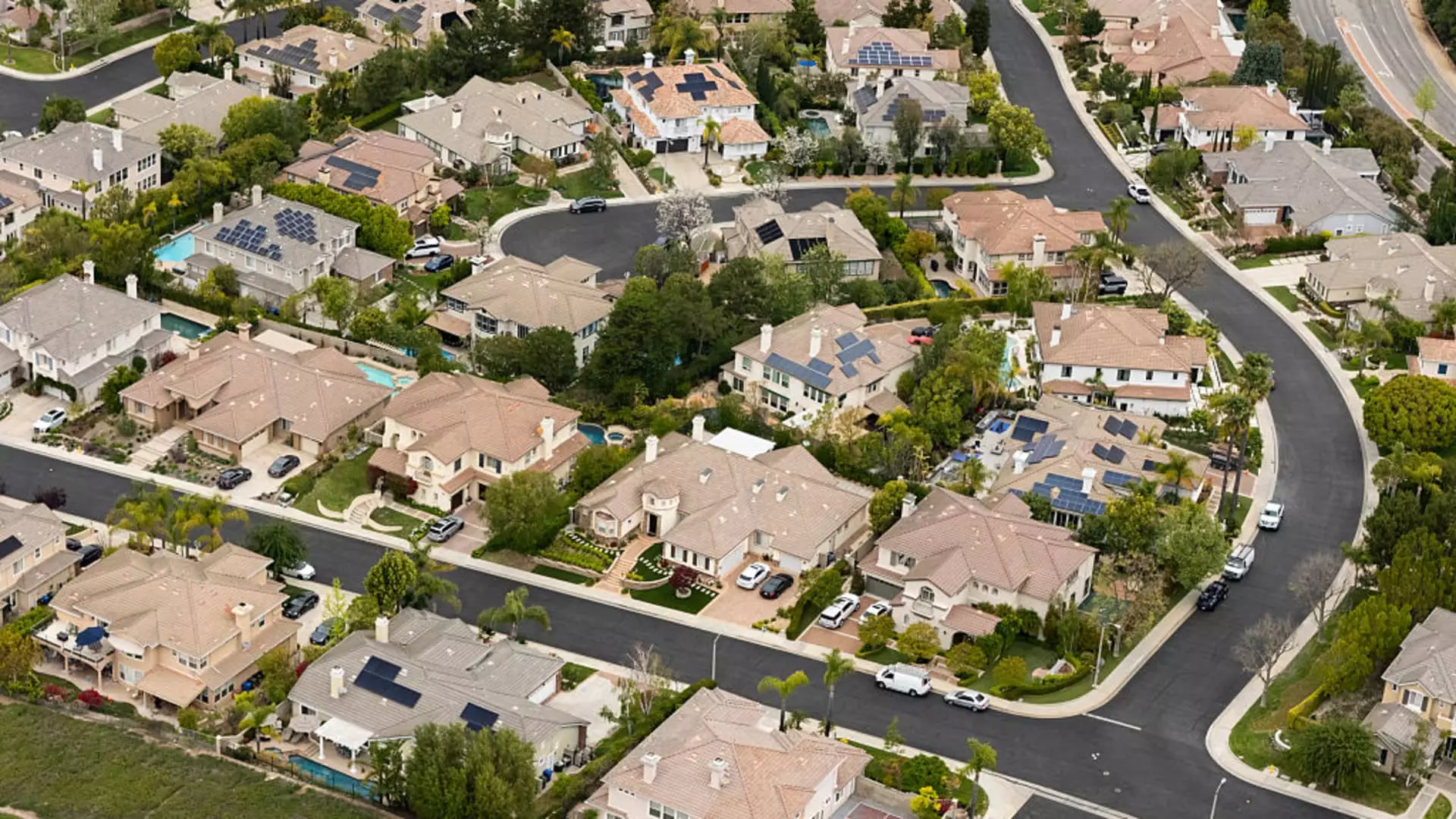The housing market, once a beacon of hope for the American Dream, now stands as a stark reminder of economic disparity. The repercussions of the pandemic’s housing boom are profound, with the S&P CoreLogic Case-Shiller Index revealing a staggering 39% increase in home prices from March 2019 to March 2023. This figure reflects not just a rise in prices but the erosion of affordable housing options that put dreams of ownership out of reach for many. The current situation has birthed a troubling reality: while home prices skyrocket, the ability to purchase homes takes a nose dive—especially for those on lower incomes.
In recent years, the market has witnessed a peculiar trend where the supply of homes remains strikingly low despite strong demand. Yet the modest relief in supply has not come with any meaningful price drop for lower- and middle-income potential homeowners. The irony of abundance in high-end listings while affordable options dwindle is striking. With the National Association of Realtors and Realtor.com recently highlighting these trends, it becomes evident that the most vulnerable households are facing insurmountable challenges in their quest for homeownership.
Affordable Homes: A Dwindling Supply
Homeownership, often heralded as a cornerstone of financial stability, is becoming increasingly elusive for the middle and lower classes. Data reveals a grim statistic: buyers earning between $75,000 and $100,000 can only access 21.2% of available homes, a drastic drop from 48.8% in 2019. The ideal situation—a balanced market—where a reasonable percentage should be attainable by this demographic seems far-fetched, with an apparent shortfall in listings priced below $255,000 amounting to 416,000 homes needed to restore equilibrium.
For those earning below $75,000, the situation is even harsher, with a buyer earning $50,000 able to afford a meager 8.7% of available listings—a stark contrast to the more accessible 27.8% just four years ago. This sharp downturn signifies a larger problem festering within our economic framework and highlights a systemic failure to provide adequate housing solutions that cater to all income levels.
The Rampant Inequities in Housing
As the landscapes of urban and suburban environments shift, the trend of wealth fueling housing access further intensifies. The privileged class with incomes above $250,000 can comfortably afford over 80% of listings, creating a chasm between haves and have-nots. Affordability has become a laughable term, masquerading as inclusion while systematically excluding lower-income families from participation in the market.
Real estate economist Danielle Hale astutely states that while some areas are witnessing growth in moderate-income listings, the overall picture reveals an alarming scarcity of affordable homes. The troubling bit? Gains in inventory have not been realized universally, revealing yet another layer of inequality. Areas like the Midwest show signs of stability, while major urban centers continue to spiral into a crunch that many fear will only worsen with time.
An Unequal Recovery: Regional Disparities
The disparity paints a bleak picture nationwide, with over 40% of major metropolitan areas—such as Seattle and Washington, D.C.—still drowning in hardships. Families in these locations must earn upwards of $150,000 just to grasp half of the homes available, a stark contradiction to the principle that hard work determines one’s fate.
Meanwhile, regions deemed overheated, such as Austin and San Francisco, are finally experiencing a cooling down effect, with affordable housing stock finally surpassing pre-pandemic levels. The question begs: why is it that some cities recover while others fall deeper into crisis? With construction facing obstacles from high costs and stringent zoning laws, builders are ironically trapped in a cycle that both defies demand and accelerates inequality.
Eyes Wide Open: The Need for Structural Change
Despite the valiant efforts of some builders to introduce more affordable homes to the mix, the market is fraught with obstacles, from tariffs to immigration policies that could pump even more inflation into construction costs. As single-family housing starts dwindle by nearly 10% year-over-year, the looming threat of a crisis deepens, underscoring an urgent need for a holistic approach to housing reform.
In Tinseltown and beyond, bureaucratic entanglements and an ever-increasing lack of buildable land only exacerbate the dire situation. If we continue to let a few affluent individuals benefit at the expense of a majority, we may risk not just our homes, but the very fabric of our society.
A concerted effort from policy-makers, developers, and community leaders is critical in reshaping this narrative. Empowering low- and moderate-income families with viable housing options isn’t just necessary—it’s a moral imperative. The American dream should not be exclusively reserved for the privileged few; it’s high time we demand equitable access to housing for everyone.

